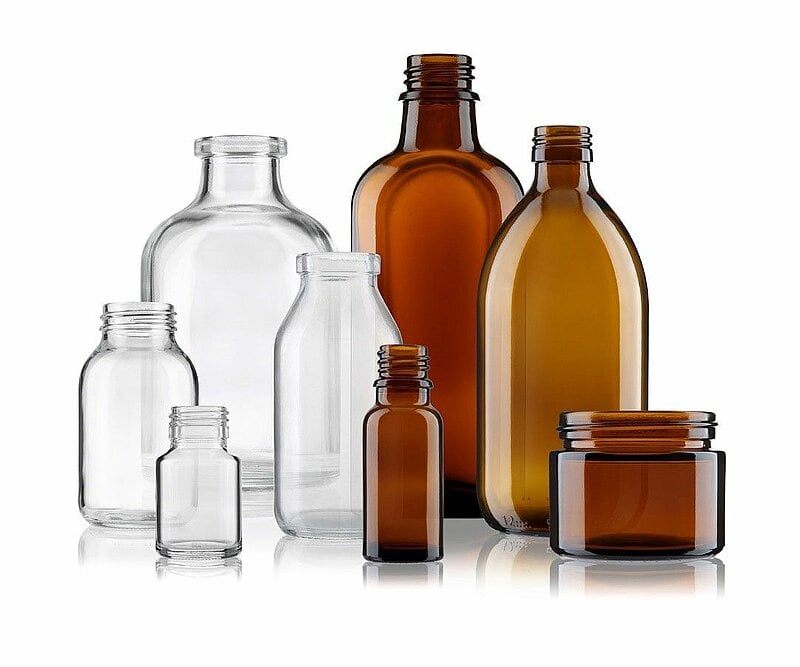Source: Link Testing Instruments Co.,Ltd.

I.Relevant Standards and Core Requirements
Bottle Body Thickness and Base Thickness:
Bottle body and base thickness must fall within the range specified in Table 2 (based on volume).
Measurement Accuracy: Use a thickness gauge with an accuracy of 0.05mm.
Thickness Ratio Requirements:
Thickness ratio of the same bottle body: Measure 4-6 points on the same horizontal plane on the bottle body. The thickness difference must not exceed the standard limit.
Thickness ratio of the same bottle base: Measure multiple points at the center and edges of the base and calculate the thickness ratio (thickest point/thinnest point) to avoid stress concentration risks.
GB/T 2641-2021 "Glass Bottles for Controlled Antibiotics"
Bottle Base Thickness:
Measurement accuracy must reach 0.02mm (standard requirement); actual testing equipment accuracy may require higher accuracy (e.g., 0.001mm).
Measure 4-6 points on the same bottle base. The thickness difference must not exceed 0.05mm.
GB/Z 12414-2021 "Glass Tubes for Pharmaceutical Use"
Wall Thickness Measurement:
Use a thickness gauge with an accuracy of 0.01mm. Measurements must be made while rotating within the same measuring plane to ensure data consistency.
General Chapter 4003 of the 2025 Edition of the Chinese Pharmacopoeia
Wall Thickness Uniformity:
The wall thickness of pharmaceutical glass bottles must be uniform, with thickness variations controlled to ≤0.05mm (refer to the YBB standard).
Internal Stress Testing:
Birefringence optical path difference (δ) is measured using a polarizing stress meter. The optical path difference per unit thickness of borosilicate glass must not exceed 40nm/mm.
YBB Standards (e.g., YBB00292005-1-2015)
Lyophilized Powder Bottles/Ampoules:
Wall Thickness Uniformity Requirements: Measure 4-6 points on the same cross-section. The thickness variation must be controlled to ≤0.05mm. Bottom thickness uniformity: Measure multiple points in the center and edge areas of the bottle bottom and calculate the thickness ratio.
II. Wall Thickness Measurement Method and Key Technical Points
Cleaning: Remove stains and scratches from the bottle surface to prevent interference with measurement.
Calibration Equipment: Calibrate the thickness gauge using a standard thickness gauge to ensure an error of ≤±0.5%.
2. Measurement Procedure
Bottle Thickness Measurement:
Evenly distribute 4-6 points on the same horizontal plane of the bottle body (avoiding the neck and thread areas) and record the maximum and minimum values.
Calculate the thickness difference to ensure compliance with standard limits.
Excessive thickness ratios may cause stress concentration and require special attention.
Automatic Statistical Analysis: Use the high-precision CHY-B2 electronic wall thickness tester to automatically calculate the thickness difference, thickness ratio, and determine compliance.
Result Output: Test results can be directly printed using a micro printer.
III. Precautions and Maintenance
After each test, clean the probe, fixture, and measuring table with anhydrous ethanol or purified water.
Calibrate once a month using a standard test block to ensure long-term accuracy.
When not in use for long periods of time, turn off the power and store in a dry, well-ventilated area, away from direct sunlight and moisture.
IV.Link Testing's Technical Advantages
CHY-B2 Electronic Wall Thickness Tester
High-Precision Measurement: Utilizes an industrial-grade sensor, supports both bottle body and bottle base modes, and has a measurement range of 0-12.7mm with a graduation of 0.001mm.
Intelligent Analysis: Built-in statistical functions automatically calculate thickness difference and average values, and support data export and printing to meet GMP compliance requirements.
Multi-Scenario Adaptability: Suitable for testing a variety of pharmaceutical glass containers, including freeze-dried powder bottles, ampoules, and infusion bottles.
The wall thickness measurement of pharmaceutical glass containers must strictly follow national standards and pharmacopoeia requirements to ensure safety during use, transportation, and storage, thereby ensuring patient safety, the pharmaceutical company's corporate reputation and brand image, and extending the drug's shelf life and reducing corresponding costs.
Related Instruments:
For more details please visit www.linktesting.org